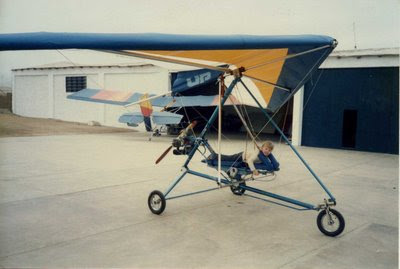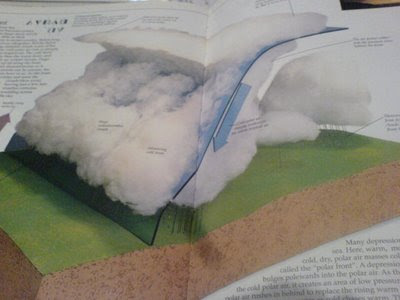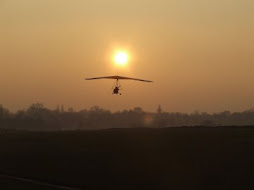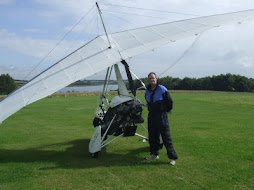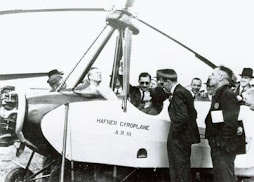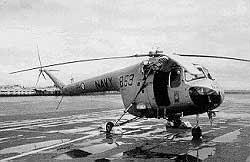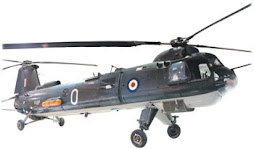I have been on the BMAA forum and people have given kind and helpful advice. One in particular pointed out the irony that now that I have taken the exam, I am very well placed to know what to expect with the retake, which puts me in a stronger position than virgin candidates.
As well as being given one or two good book references and some very sound exams skills advice on the forum, I have received emails from one pilot, which have been very helpful indeed.
I am touched by everyone's kindness and understanding.
Thursday, 26 February 2009
Monday, 23 February 2009
I failed!
The taller they are, the harder they fall - and pride comes before a fall provide the basis of a mixed metaphor which I can work on when I am not rushing to get ready for school, but there is nothing more humbling, barring crashing on your first solo, which one consoling voice soothed my anguish with today, than getting 87.5% on Mock and 45 on the real thing. I failed miserably.
But once I got it all in perspective, I realised that I feel more angry than disappointed because nothing in my mock prepared me for the format of the exam, about which more tomorrow. I did make some very silly mistakes....but I put those down to the panic and stress caused by being presented with two tasks which were not on any of the 4 mocks I did: analysing a document and doing a full plan BEFORE answering the questions about teh route. In the mocks, the process unfolds bit by bit, so that one piece of information informs another....and you know you are building it up logically, but when you have to plan it all in advance, you don't spot any errors and the errors are compounded.
Realising this put me in a spin, so that in no time at all I made a fundamental error through stress alone, which affected my over-all journey length, airtime, groundspeed, fuel burn etc!!
So, even though the examiner said my manipulation of formulae, 1-in-60 rule, triangles and route planning were all fine, I still dropped umpteen marks. Jeeeezus!
Depressed and angry now. Not a good end to the half term.
On the plus side, I did fly (solo) and did manage to land right on the numbers three times in a row.
But once I got it all in perspective, I realised that I feel more angry than disappointed because nothing in my mock prepared me for the format of the exam, about which more tomorrow. I did make some very silly mistakes....but I put those down to the panic and stress caused by being presented with two tasks which were not on any of the 4 mocks I did: analysing a document and doing a full plan BEFORE answering the questions about teh route. In the mocks, the process unfolds bit by bit, so that one piece of information informs another....and you know you are building it up logically, but when you have to plan it all in advance, you don't spot any errors and the errors are compounded.
Realising this put me in a spin, so that in no time at all I made a fundamental error through stress alone, which affected my over-all journey length, airtime, groundspeed, fuel burn etc!!
So, even though the examiner said my manipulation of formulae, 1-in-60 rule, triangles and route planning were all fine, I still dropped umpteen marks. Jeeeezus!
Depressed and angry now. Not a good end to the half term.
On the plus side, I did fly (solo) and did manage to land right on the numbers three times in a row.
Friday, 20 February 2009
Like I always tell my pupils, read the question CAREFULLY!
I have just been analysing my mistakes and realised that I broke one of my cardinal rules, one I always bang on about when prepping pupils for their SATs - always read the question carefully!
I measured the distance between two plots and got 77 and selected 77 from the multiple choice, but hadn't noticed that the answer was in statute miles, not nautical miles. The nautical mile option was way off, so I can see why my eye went straight to the 77. What I should have done was convert the 77 nm into kilometres, which is 142.5!
Now I reckon that question is a bit cheeky and I can almost see the Machiavellian grin on the setter's face, but I reckon whoever he is has taught me a valuable lesson: check your units carefully!
I measured the distance between two plots and got 77 and selected 77 from the multiple choice, but hadn't noticed that the answer was in statute miles, not nautical miles. The nautical mile option was way off, so I can see why my eye went straight to the 77. What I should have done was convert the 77 nm into kilometres, which is 142.5!
Now I reckon that question is a bit cheeky and I can almost see the Machiavellian grin on the setter's face, but I reckon whoever he is has taught me a valuable lesson: check your units carefully!
Mock result
Really annoyed with myself for getting 4 out of 32 wrong = 87.5% right. Can't wait for Neill to tell me what I got wrong, but he tells me that the real test is one and a half hours long and has 20 questions, whereas I did my 32 questions in half that time. Apparently I got a couple of my mistakes in my first 20, so if I have twice as long as I took and fewer questions, there really should be no reason why I shouldn't get 100%. 70% is pass mark, so I am encouraged, anyway.
Update:
Just talked to Neill. My mistakes were of the general knowledge variety and one conversion error, so nothing to worry about. Glad my plots, triangles and 1-in-60 rules calculations were all sound, anyway.
I am taking the exam on Monday and Neill thinks we may get to fly my first revision hours too, as Sywell is now allowing flying again. Some wind is forecast, but nothing too worrying. Can't wait!
Update:
Just talked to Neill. My mistakes were of the general knowledge variety and one conversion error, so nothing to worry about. Glad my plots, triangles and 1-in-60 rules calculations were all sound, anyway.
I am taking the exam on Monday and Neill thinks we may get to fly my first revision hours too, as Sywell is now allowing flying again. Some wind is forecast, but nothing too worrying. Can't wait!
Mock Exam done
Well, it is 5 a.m. and I have just emailed my answers to Neill, and I feel pretty confident. It was great fun and unlike exams I have done in the past, where I felt I had to just blag my way and hope for the best, I went into this confidently and enjoyed the challenge. My Dotty Dog rule stood me in good stead and my triangles of velocities held up, though I did have a minor panic about measuring A-X2 for Ground speed, but it came back to me just in time.
Really the only thing that taxed me was plotting on a 1:500,000 chart, as I had concentrated most revision on the 1:250,000 chart, which is easier to read, especially as the Transverse Mercator projection means that you can slide two rules at right angles to get a plot, which you can't do with a curved line of latitude.
Anyway, can't wait for my results! If I have done as well as I think, I am ready to take the exam and might as well go to Sywell to take it, whether it is flyable this weekend or not.
This all goes to prove that the best way to learn something is to try to teach it to someone else - and it also proves the benefit of visual mnemonics.
Really the only thing that taxed me was plotting on a 1:500,000 chart, as I had concentrated most revision on the 1:250,000 chart, which is easier to read, especially as the Transverse Mercator projection means that you can slide two rules at right angles to get a plot, which you can't do with a curved line of latitude.
Anyway, can't wait for my results! If I have done as well as I think, I am ready to take the exam and might as well go to Sywell to take it, whether it is flyable this weekend or not.
This all goes to prove that the best way to learn something is to try to teach it to someone else - and it also proves the benefit of visual mnemonics.
Thursday, 19 February 2009
The End is Nigh

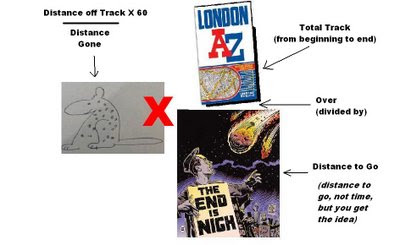

Great. Not only does this work, now, but I actually like it better!
click images to enlarge
Since I first posted this, one or two have said it is too much to remember, but it may help some people and at least producing it has crystallised the idea in my own mind. They say the best way to learn something is to try to explain it to someone else.
.
click images to enlarge
Since I first posted this, one or two have said it is too much to remember, but it may help some people and at least producing it has crystallised the idea in my own mind. They say the best way to learn something is to try to explain it to someone else.
.
just had a *@G*!^*! moment
*******! - this was going to be a superb mnemonic...but I just realised that my sofa was misremembered. So....
For god's sake do not memorise this.
For god's sake do not memorise this.
 IT WAS a great inspiration. I needed a way of remembering the rest of my Dotty Dog formula. This pictorial mnemonic. Dotty dog x A-Z over sofa
IT WAS a great inspiration. I needed a way of remembering the rest of my Dotty Dog formula. This pictorial mnemonic. Dotty dog x A-Z over sofawhere Dotty Dog is Distance off track x 60 over Distance gone
 A-Z is Total Track (all the way from A-Z) Sofa is Distance gone SoFar
A-Z is Total Track (all the way from A-Z) Sofa is Distance gone SoFar SOFAr is the big mistake.....because it is not so far, but distance TO GO
SOFAr is the big mistake.....because it is not so far, but distance TO GO(I shouldn't really publish this, but seems a shame to waste the effort! Blame me when future students all get this question wrong!
I can keep the dog and the A-Z but I need to replace the sofa with a means of recalling DISTANCE TO GO. I suppose I could move the sofa and have my dotty dog sitting on it, as that part of the formula is about how far I have gone so far, but it confuses things, I reckon, and could make the DOG redundant, poor thing.....and I really love that dog!
The Plodding Plotter
 Last night (the small hours of the morning actually, which is when my brain clicks into life) I worked steadily through 100 Navigation questions which I got from Pegasus Flight Training in 2001 ....and I got them all right! All of them.
Last night (the small hours of the morning actually, which is when my brain clicks into life) I worked steadily through 100 Navigation questions which I got from Pegasus Flight Training in 2001 ....and I got them all right! All of them.But there is a catch.
It took me hours. Sure, it was great revision and not only did I do it competently, but I enjoyed enormously. But it did take me ages! Must find out today how many questions are on the real paper because I don't think I could get through 100 in an hour or even and hour and a half.
I found that I could use my whizz-wheel for conversions easily (gallons to litres, km or miles to knots, etc), that I'd forgotten how to use it for wind drift, but that I was able to plot triangles of velocities on paper for this. Grid references were easy enough to find and the whole plotting and answering questions about the route, and the 1-in-60 questions were fun (using my Dotty Dog).
I really had a ball. And if I had enough time I know I would be fine on the exam...but I am a plodding plotter...and I fear that I will run out of time on the day.
Tonight - well, probably closer to 2 a.m (must talk to Irwin about setting exam at that time, hehe) I will do a mock test that Neill has set me.

.
Monday, 16 February 2009
A pedal-powered Doodlebug?
Only a couple of years older than me in 1985, Rupert Sweet-Escott, 23, had already been flying for ten years! I'd wasted several years in a cult, had achieved almost nothing at all, worked in a bookshop and could barely afford to make the odd balsa model of a Westland Lysander, while this chap had already been a gliding instructor and built several aircraft, including a series of Nomads, prone-piloted powered hang gliders of his own design!
That is inspiring!
That is inspiring!
Now 47, he is producing some kind of pedal-powered hang-glider. There are few details on his site, but I have written to him and hope to know more soon. Sounds really interesting. (update - exchanged email this a.m., 17th Feb. Following two pics provided by Rupert himself)
"The mechanism is very simple:
Bevel gears to change thrust direction, a flexi shaft for the supine version and away you go"
says Ru.
says Ru.
Coincidentally, I have been reading about a pedal powered aircraft, the Musfly, that David Cook was working on in 1979, the year I took 'O' levels. Sadly, the project was abandoned, but something Cook says in the book, Flying From My Mind, really struck a chord,
"I was beginning to think that what already existed wasn't necessarily always right and often the way forward is not to be influenced by the knowledge of other people, but to believe in one's own designs"
It seems to me that Sweet-Escott has that attitude too and it really chimes with mine, and I can't wait to see what comes of it. "Ru" tells me there is even a chance that the Nomad, which had push right, go right stearing at the feet, may go back into production.
Tuesday, 10 February 2009
Snow, snow and more snow



Neill's photos make it clear why we are not flying. It is likely to take a full week for the airfield to dry out. That gives me plenty of study time. My Nav is improving and I am getting my head around Met, which is not nearly as daunting as I feared. In fact, I think I am developing a keen interest in both.
I got a couple of books from the town library, including one by Brian Cosgrove, himself and a very readable celebration of clouds, The Cloudspotter's Guide, by Gavin Pretor-Pinney. I also have a kids' Eyewitness Guide to weather, which my school's library was chucking out, which has some invaluable 3D models of weather fronts and which, co-incidentally, was also written by Brian Cosgrove, who for those not into microlighting, is the author of the microlighters' bible, the Microlight Pilot's Handbook. I have just ordered my own, second hand copies of the library books on Amazon. Both, including postage come to less that £8.
I got a couple of books from the town library, including one by Brian Cosgrove, himself and a very readable celebration of clouds, The Cloudspotter's Guide, by Gavin Pretor-Pinney. I also have a kids' Eyewitness Guide to weather, which my school's library was chucking out, which has some invaluable 3D models of weather fronts and which, co-incidentally, was also written by Brian Cosgrove, who for those not into microlighting, is the author of the microlighters' bible, the Microlight Pilot's Handbook. I have just ordered my own, second hand copies of the library books on Amazon. Both, including postage come to less that £8.
Monday, 9 February 2009
Hi Chris
Just want to say hi to Chris in Iraq!
Chris is a month away from completing a tour of duty with the U.S. Marines in Iraq and is aiming to learn to fly microlights when he gets home, and take his wife flying.
Good luck to you, mate.
Chris is a month away from completing a tour of duty with the U.S. Marines in Iraq and is aiming to learn to fly microlights when he gets home, and take his wife flying.
Good luck to you, mate.
Sunday, 1 February 2009
fine button operation with gloves on
Update: Since writing this entry, Stewart Bond has convinced me that watch altimeters are too inaccurate to rely on in flight, and in fact a seller on ebay revealed that they sample only every minute, so they don't give real-time readings anyway. I may well get a Digifly after all. But I like the idea of the gizmo below, even for the chance just to enjoy making it. I may make it for my stopwatch.

Have been thinking about getting an altimeter watch, but wondered how I would cope with little buttons while wearing gloves. This is one solution I think it would be easy to knock up. I would probably do it in brass, for ease of construction, but if your brazing isn't up to it, quite honestly it could be done in wood - simply drill the sleeves in a block of wood and insert loose dowels. The only real weak point would be relying on the watch button springs to pop the buttons back out, though it would be possible to put springs in the sleeves, I suppose.
Of course I don't intend to wear the watch. The idea is that it would be strapped to the base bar.

Have been thinking about getting an altimeter watch, but wondered how I would cope with little buttons while wearing gloves. This is one solution I think it would be easy to knock up. I would probably do it in brass, for ease of construction, but if your brazing isn't up to it, quite honestly it could be done in wood - simply drill the sleeves in a block of wood and insert loose dowels. The only real weak point would be relying on the watch button springs to pop the buttons back out, though it would be possible to put springs in the sleeves, I suppose.
Of course I don't intend to wear the watch. The idea is that it would be strapped to the base bar.
(apologies for the crude artwork, knocked up on Paint)
Wingsuits
A friend just sent me this, wondering if it might be a hoax. What I have seen (first few seconds of it), it isn't. These guys are really flying....not just falling, but actually controlling their descent...then pulling parachutes at the last second. Amazing stuff!
BASE = bridge, antennae, spans, Earth...the 4 types of high places you need to have jumped from with a parachute in order to qualify as one of the elite free-fallers. It is an extreme sport which captured my imagination about ten years ago when I read a book by a guy called Simon Jenkins, who described the anarchic business of circumventing security systems to get to the top of places that are great to jump off.
You need to be a pretty experienced parachutist to do this because you have to pull your own rip-cod from very low down and be able to judge it in extreme conditions. I bet that many who have died did so because they simply got distracted by the "rush" and opened too low. But there is nobody to stop someone trying BASE if you are not a parachutist; after all BASE is about breaking the rules and living to tell the tale.
BASE = bridge, antennae, spans, Earth...the 4 types of high places you need to have jumped from with a parachute in order to qualify as one of the elite free-fallers. It is an extreme sport which captured my imagination about ten years ago when I read a book by a guy called Simon Jenkins, who described the anarchic business of circumventing security systems to get to the top of places that are great to jump off.
You need to be a pretty experienced parachutist to do this because you have to pull your own rip-cod from very low down and be able to judge it in extreme conditions. I bet that many who have died did so because they simply got distracted by the "rush" and opened too low. But there is nobody to stop someone trying BASE if you are not a parachutist; after all BASE is about breaking the rules and living to tell the tale.
Subscribe to:
Comments (Atom)

